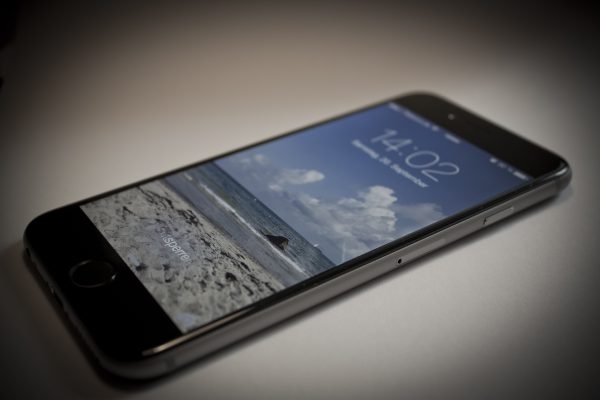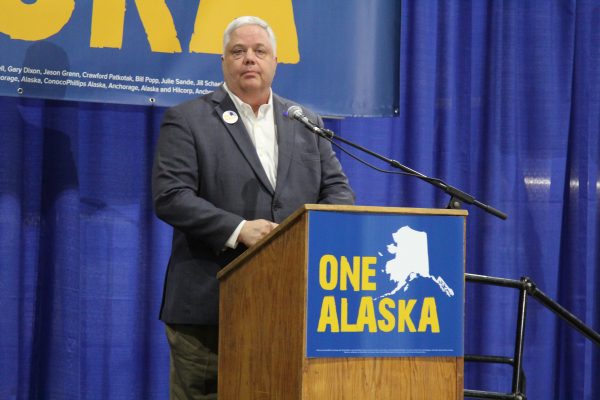
Anchorage officials say they’re pushing closer to the launch of smartphone apps that could alert people who’ve been exposed to someone with COVID-19, though the initiative is still waiting for Alaska GOP Gov. Mike Dunleavy’s administration to approve it.
Some two-dozen states, from Washington to Wyoming to North Carolina, have already launched exposure notification apps. The apps, which only work if people choose to turn them on, use Bluetooth technology developed by Google and Apple to alert people if they’ve spent time near another user who later tests positive for COVID-19.

The apps come with built-in privacy protections, and could be a valuable tool as Alaska seeks to reopen to business and tourism, said Brendan Babb, Anchorage’s chief innovation officer.
“It’s amazing that there are so many people that are vaccinated,” he said in an interview Monday. “But we aren’t quite out of the woods yet.”
In a recent public opinion survey of Anchorage residents conducted by the city, 55% said they would be interested in having a COVID-19 exposure notification app on their phone.
But even if people don’t decide to use the apps in large numbers, they could still be effective: Babb pointed to estimates from British researchers suggesting that for every 1% increase in users, infections can be reduced by 0.8% to 2.3%.
Anchorage’s municipal government has convened a working group that’s been examining the apps’ potential. Last month, it approved a $90,000 purchase order with marketing firm Yuit Communications to help roll out the program.
The Anchorage Economic Development Corp. and Visit Anchorage, a tourism group, have also endorsed the apps, and have both written letters pushing the Dunleavy administration for its approval — which is needed before the program can be launched on a statewide basis.
The apps probably add “an additional layer of protection” for users, and Dunleavy’s administration is looking forward to continuing conversations on them, said Dr. Anne Zink, Alaska’s chief medical officer.
There doesn’t appear to be any organized opposition to the apps so far. But Zink said the Department of Health and Social Services’ main focus, at the moment, is on other projects.
“The department has had to recently prioritize which projects it’s pursuing the most, and vaccine has been the No. 1,” she said. “We don’t see the exposure notification app as being the single most highly-effective tool, compared to other strategies.”

“We’re not at a yes; we’re not at a hard no,” she said. “We’ve got lots going on, and we’re having to prioritize what is going to have the biggest impact.”
Smartphones have been used since the beginning of the COVID-19 pandemic to help break chains of virus transmission — including by some nations, including China and Israel, who raised privacy concerns by doing so without users’ consent.
Apps launched in the U.S. have been designed to preserve users’ anonymity, and to function only with permission at each step in the process. They’re aimed at complementing public health agencies’ efforts on contact tracing — a separate virus-containment measure in which employees interview people who have tested positive in an effort to identify and alert others who may have been exposed.
RELATED: Meet the team of Alaskans trying to trace and contain every case of COVID-19
Contact tracers in Alaska and other states have periodically faced backlogs when cases surge. Exposure notification boosters say the technology can help alert close contacts more quickly.
Anchorage officials want to use an existing system created by Google and Apple. It’s built-in on Apple devices, and if Dunleavy’s administration signs off, users could simply turn it on. Non-Apple users would have to download an app from Google, Babb said.
The system works by regularly sending out a random number over Bluetooth, which is recorded and stored by any other devices nearby. The numbers transmitted by each phone change multiple times an hour, so they’re not tied to a user’s identity.
If someone later tests positive for COVID-19, they can choose to send the numbers used by their phone to a server.
At least once a day, each phone using the app downloads the numbers associated with positive tests. If any of them match the numbers received by the app from other phones, the user gets an alert and can choose to quarantine or take a COVID-19 test.
Apple and Google say they don’t get access to information “related to any identifiable individual.”

“It does not, in any way, violate personal privacy,” Bill Popp, Anchorage Economic Development Corporation’s chief executive, said in an interview. “For those who are deeply concerned about their personal freedoms and their personal privacy, congratulations: You don’t have to use this app. It is purely voluntary.”
AEDC is one of at least two business groups that have written to Adam Crum, Alaska’s health commissioner, in the past month urging him to approve the apps’ use.
The second is Visit Anchorage, the city’s major tourism promotion group.
Exposure notification boosters say the apps could be particularly helpful as Alaska seeks to rejuvenate its tourism industry, which has been devastated by the COVID-19 pandemic.
Visitors to the Hawaiian island of Maui are required to download and activate an exposure notification app that runs on the Google-Apple technology. Hawaii has its own version called AlohaSafe Alert.
“At some point, now that we have 20 states using it, it’s something that people will just expect when they’re traveling,” said Babb.
The apps could be up and running within a few weeks if the state signs off on them, Babb said. But there’s not yet a clear timetable for when that might happen.

Dr. Tom Hennessy, a University of Alaska Anchorage epidemiologist who’s been working with Anchorage’s city government on exposure notification, said it’s unfortunate public health officials don’t have all the tools available to them at a time when they’re still battling community spread of COVID-19.
But, he added, there are “political and bandwidth realities that the state of Alaska is dealing with.”
At a meeting with Dunleavy administration officials about the apps over the summer, they asked a lot of appropriate questions about the security and privacy considerations, Hennessy said.
“I think we’ve probably addressed the basics of that, but maybe not the overall sense that the government is standing up something that will somehow gather information on people,” he said. “They’re practical people. They want tools. I think we will get there — it’s just a matter of time.”
Nathaniel Herz is an Anchorage-based journalist. He's been a reporter in Alaska for a decade, and is currently reporting for Alaska Public Media. Find more of his work by subscribing to his newsletter, Northern Journal, at natherz.substack.com. Reach him at natherz@gmail.com.




